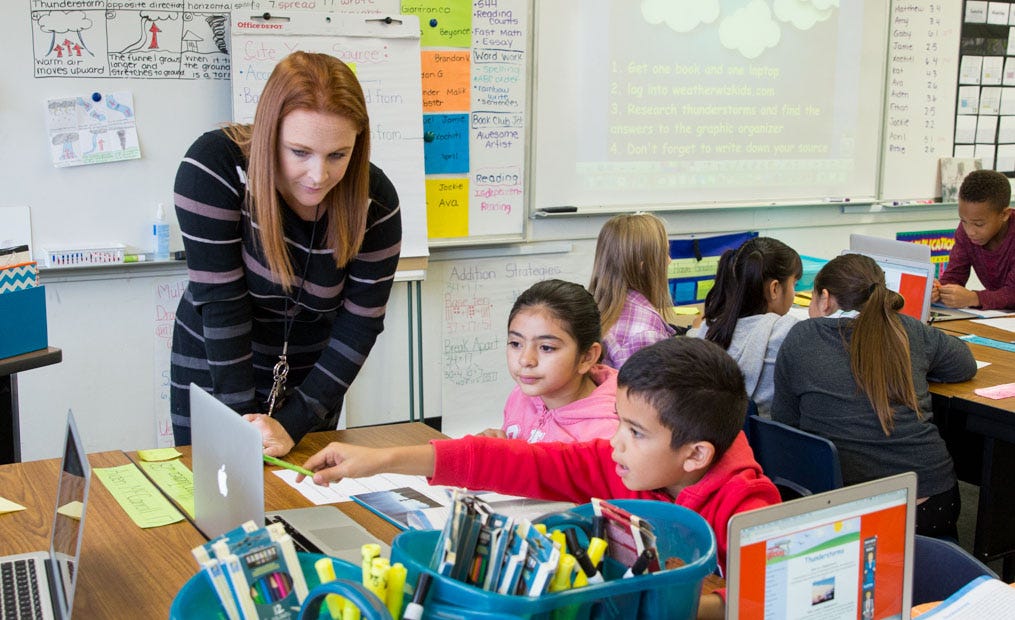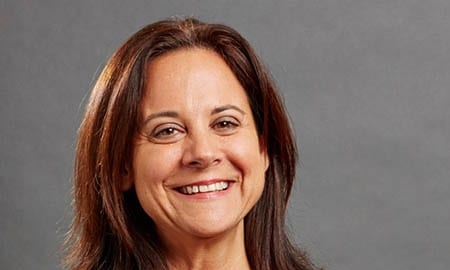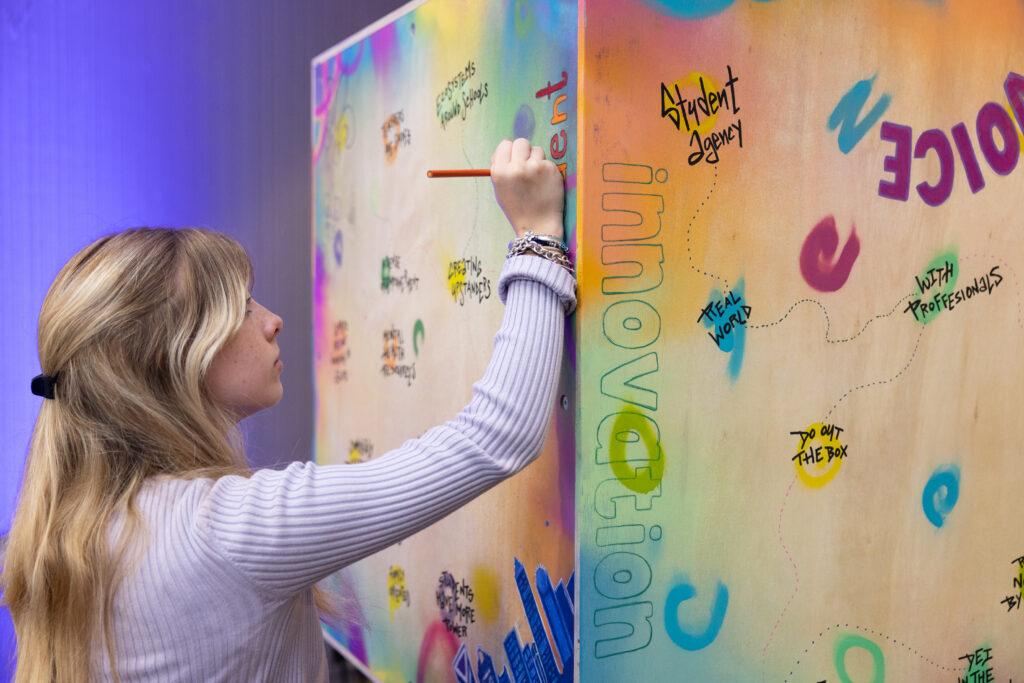By Stacey Childress, CEO, NewSchools Venture Fund

Enthusiasm for social emotional learning has reached a fever pitch among policymakers and funders. Whether it’s framed as a focus on the whole child, comprehensive student development or a richer vision for student learning, expanding beyond math and reading scores as markers of school and student success has gone mainstream.
Our team at NewSchools just released a new Insight Brief called “Using Expanded Measures of Student Success for School Improvement.” In it, we share some of our lessons from the innovative public schools in our portfolio. These district and charter schools are designed to help students build a strong academic foundation and the mindsets, habits and skills they need for success in young adulthood.
In 2016, we partnered with Transforming Education (TransformEd) to help the schools in our portfolio adopt common measures of academics, social emotional competencies, and school culture/climate factors. Together, we provide school leaders and teachers with evidence-backed resources and technical assistance to understand and improve on these indicators.
We’re also committed to advancing the state of practice, research and policy more broadly, so we try to share what we’re learning from this project as lessons emerge. Our new piece explains five insights:
1. Get specific. Pick a few aligned indicators, ensure commitment to them, and provide resources and practices to improve them.
2. The hunger for external benchmark data is enormous, but homegrown data is often more useful and actionable.
3. Schools with two years of data improved on all social-emotional and culture/climate indicators we track. But their patterns of academic growth are not as consistent.
4. Growth mindset and perceptions of school safety are once again the indicators most strongly associated with academic performance in the social emotional and culture/climate categories.
5. A surprising trend: Sense of belonging is not correlated with academic outcomes in our data.
The data and stories behind these insights come from the 2017–18 school year, the second year of a multi-year project to understand how our schools expand the definition of student success. The lessons come from 40 district and charter schools across 16 states with 12,000 students. Last year, we released our first Insight Brief on this topic, with four key headlines from the prior school year. If you haven’t had a chance to read it, I encourage you to take a look.
We still have so much to learn, but I’m encouraged by how far the work has come. When I joined NewSchools as CEO in 2014, I asked a lot of questions about how we might build on the organization’s history to create even more impact for students. Most of all, I brought a new vision to anchor our work: Every young person in America should finish high school prepared and inspired to build a good life for themselves. Reaching this vision will take what we’ve come to call “an expanded definition of student success.” In simplest terms, it acknowledges that students need a strong academic foundation and other important mindsets, habits and skills to prepare them for success in young adulthood. This means pursuing self-determined aspirations and goals, achieving financial stability and engaging in the civic life of their communities.
I wasn’t the only person with this on my mind. In fact, many educators across the country were also hungry for a richer vision for student learning and were eager to find better ways to support their students’ academic and social emotional development.
Since then, we’ve invested in more than 100 teams that share this vision and passion. Some are still in the planning stage, designing a new district or charter school. Others have already opened their schools in cities, suburbs and rural areas around the country. Their schools don’t look the same — they have different themes, use different curricula, and serve different grades from preK–12. But they all share common elements of innovative schools and a commitment to an expanded definition of student success.
I am grateful to all of them for their commitment to young people, and for the way their work is helping advance the field’s understanding of how to prepare students for a life full of opportunity and purpose. I hope you’ll review the insights emerging from their work and share your own lessons about expanding the definition of student success.



